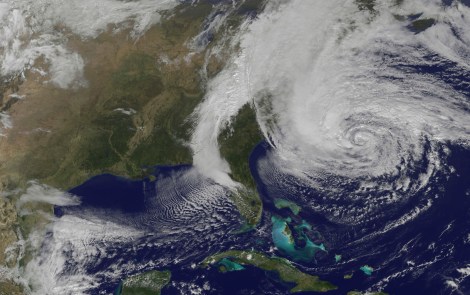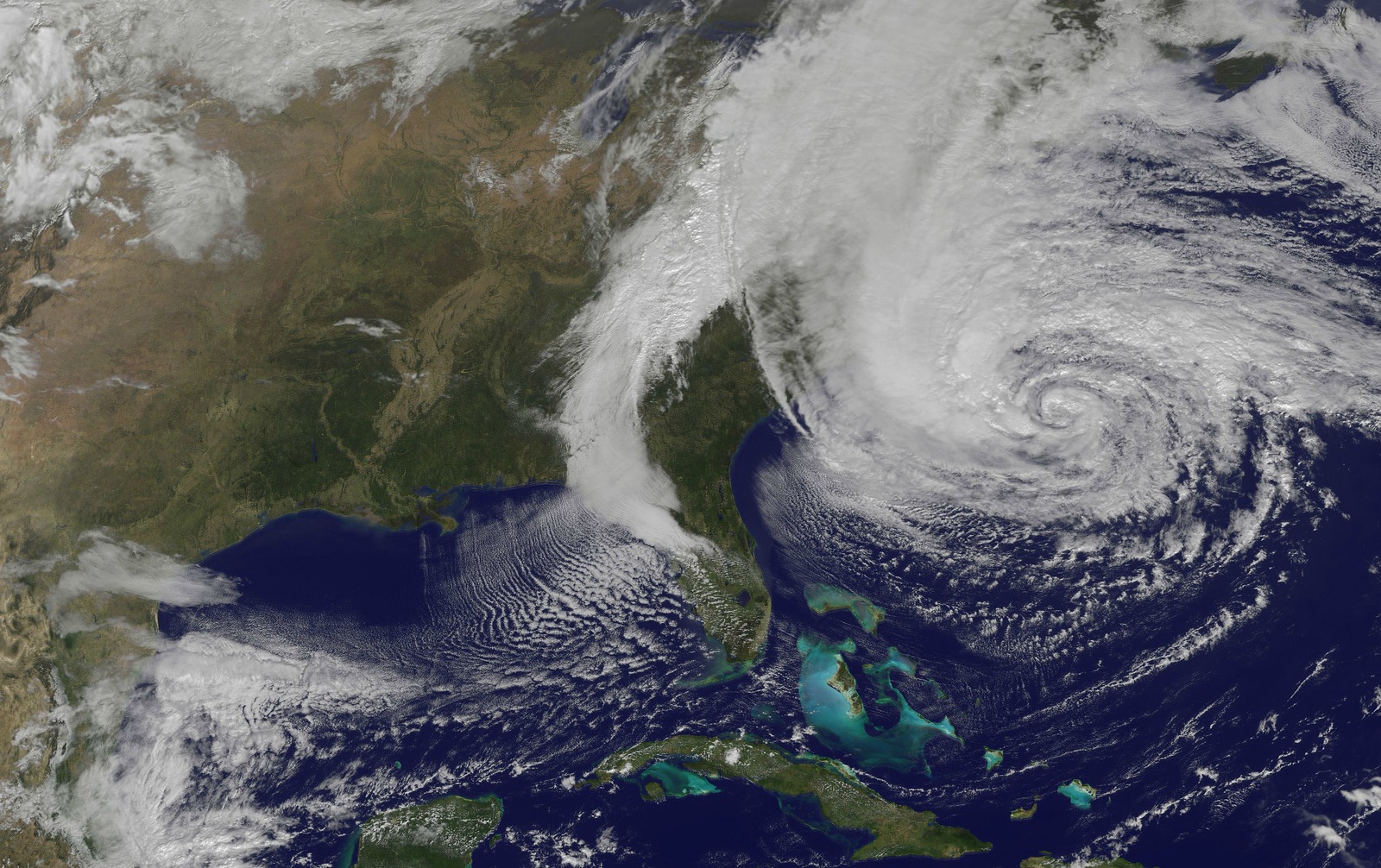
NASA GOES ProjectHurricane Sandy.
Half of last year’s extreme weather — including the triple-digit temperatures of America’s July heatwave — were due in part to climate change, new research said on Thursday.
The study [PDF], edited by scientists from NOAA and the U.K. Met Office, detected the fingerprints of climate change on about half of the 12 most extreme weather events of 2012.
The researchers said climate change helped raise the temperatures during the run of 100-degree-F days in last year’s American heatwave; drove the record loss of Arctic sea ice; and fueled the devastating storm surge of Hurricane Sandy. “The analyses reveals compelling evidence that human-caused climate change was a factor contributing to the extreme events,” Thomas Karl, director of the National Climatic Data Center, told reporters in a conference call on Thursday.
But the researchers said they found no evidence of climate change on other extreme weather events — especially those involving rainfall, or its absence.
Climate change was not responsible for Britain’s miserable summer last year, which was the rainiest in a century. The researchers also ruled out climate change as a culprit for the Netherlands’ cold spell last year. They also didn’t find any connection between climate change and the drought that devastated America’s corn belt or the punishing droughts in Kenya and Somalia.
The findings, produced by 18 different research teams, were published in the Bulletin of the American Meteorological Society.
The researchers looked at extreme weather events around the world, including drought and heatwaves in the U.S.; flooding from Hurricane Sandy; the retreat of Arctic sea ice; the extremes of European summer and winter; drought in the Iberian Peninsula; the cold snap in the Netherlands; drought in eastern Kenya and southern Somalia; floods in northern China; and extreme rain in southwestern Japan, southeastern Australia, and parts of New Zealand.
The study found that climate change could make heatwaves like the one that scorched the American Midwest and Northeast last July four times as likely.
About 35 percent of the record-high temperatures between March and May of last year were due to climate change, it found. The study warned that climate change makes such heatwaves up to 12 times more likely to occur.
The findings reflect scientists’ growing confidence in attributing single weather events to climate change.
As the researchers noted on the conference call, for years scientists balked at declaring climate change the cause of specific weather events.
But advances in research and computer models now make accurate attributions more possible. They also increase the ability to predict the likelihood of such events recurring.
“We have got some new evidence here that human influence on climate has changed the risk, and has changed the risk enough that we can detect it,” said Peter Stott of the U.K. Met Office.
 This story first appeared on the Guardian website as part of the Climate Desk collaboration.
This story first appeared on the Guardian website as part of the Climate Desk collaboration.



